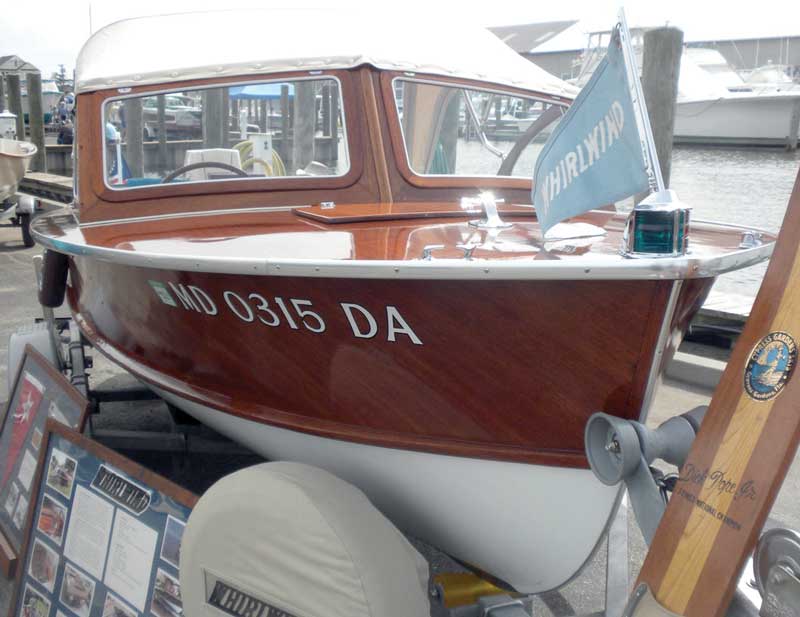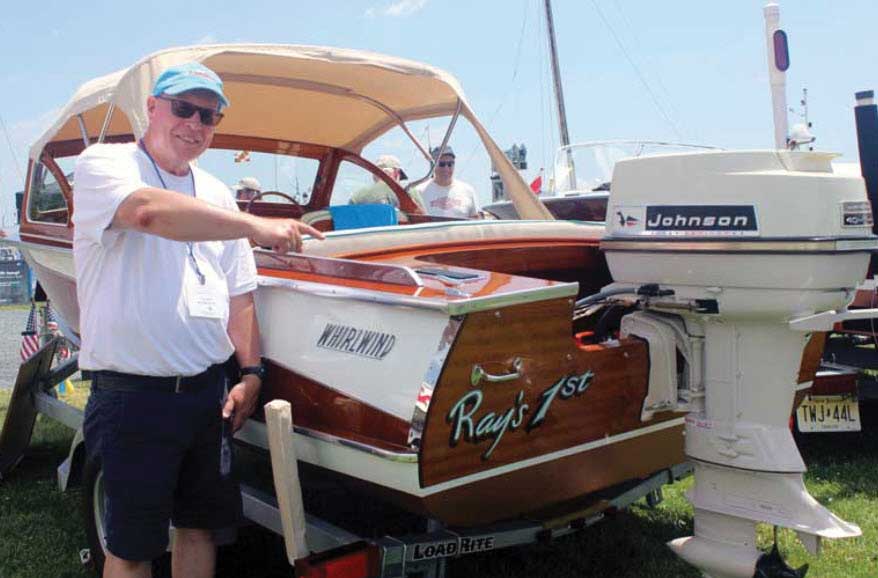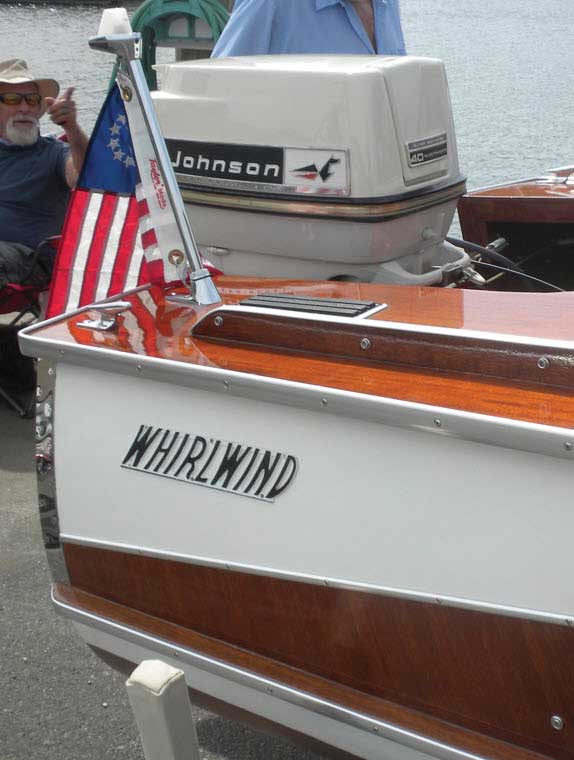Here is a beautifully restored 16-foot Whirlwind outboard runabout. Whirlwinds were built from molded plywood, a process that requires heat to set the glue that holds the veneers.

Legend has it that post World War II, when the army cancelled its contract for molded plywood amphibious gliders, the owners of the Allied Aviation plant in Dundalk, MD, decided to use the veneer, glue, and baking oven from the molding operation of the wooden airplanes to build boats.
The molded plywood construction was based on “very thin strips of resin-impregnated wood” that were wrapped around a mold in overlapping layers to create a very strong yet lightweight hull. This approach to boat building produced sleek hulls and minimized the need for interior ribs. We’ll look at the process in more detail in a few minutes.
I’ve seen this boat at several classic boat shows in recent years, including the annual Antique and Classic Boat Society (ACBS) Chesapeake Bay show in St Michaels as well as the Bristol, PA, show sponsored by the Mid-Atlantic Chapter of the ACBS.
From those several occasions to meet and talk with owner Jay Pew and his wife, Joanne, I learned a lot about the pride they have in this boat and their special memories, along with the sheer quality of this runabout’s restoration. It was his dad’s first boat (hence the boat’s name, Ray’s 1st). Jay bought this boat from his sister.

The boat had been prepped years earlier for restoration. The wood hull had been stripped and all hardware removed. But plans changed for his sister. So, this runabout unfortunately sat in the garage instead for many years.
After Jay and Joanne bought the boat, they had George Hazzard at Wooden Boat Restoration do the restoration work. In 2016, George brought the boat to the classic boat festival in St. Michaels, where it won the award for Best Outboard Powered Boat. In 2017, George worked on the top canvas along with other details to complete the restoration. The boat was finished with both its original wood and metal trim, which was re-chromed.
The boat is powered by a 1965 Johnson 40-hp outboard, well restored by Oldie but Goodie Outboards. It’s no surprise that this boat is often seen on short cruises in the waters around the north end of the Chesapeake Bay every year.
Before Whirlwinds, Molded Products Inc. made a small number of boats in 1947, including small sailboats for the Naval Academy in Annapolis. As Allied Aviation segued into building more boats, Whirlwind Boats was formed by Charley Wingo, Elwood (“Ed”) Hewitt and Charley Abramo in November 1947 as Plymold Corporation of America.
Whirlwind Boats soon moved its production to a barn in Cockeysville, MD, on the farm that ran Williamson Veneer Company. That rented barn became the home of their new boatbuilding business.

Let’s take a look now at how a Whirlwind is made. The boat builders built a solid wood hull shape called a mandrel, upon which each Whirlwind was built.
On the mandrel they identified the location for the keel and stem, and to these stapled five layers of veneer planks. The outside layers had glue on the inner side only, while the other pieces of veneer were coated with glue on both sides. Then it was entirely covered in a heavy rubber blanket with vacuum hoses. That assembly was put into a large autoclave and baked for about an hour in a huge oven.
Once cooled, the fresh hull was pried off the mandrel for finishing. At this step, they were trimmed into a boat hull by the wives of the other employees. Seats and other details like hardware were installed. At that point they had a boat, but it was unfinished. It was then varnished and painted with a colored bottom paint.
Since sources of the production numbers vary, it’s estimated that as many as 14,000 Whirlwinds were built. Demand appears to have dropped rapidly in the early ‘60s as fiberglass boats came on the market. The business closed in October 1962 when the company’s assets were sold at auction.
Fortunately, however, Whirlwinds like Ray’s 1st live on and are truly treasured.
By Chris "Seabuddy" Brown
If you're interested in Whirlwind boats, you have to check out our article and video interview with Howard Johnson, a collector and restorer of classic boats and cars. In total he has over 100 classic wooden boats on his property, and his specialty is Whirlwinds.